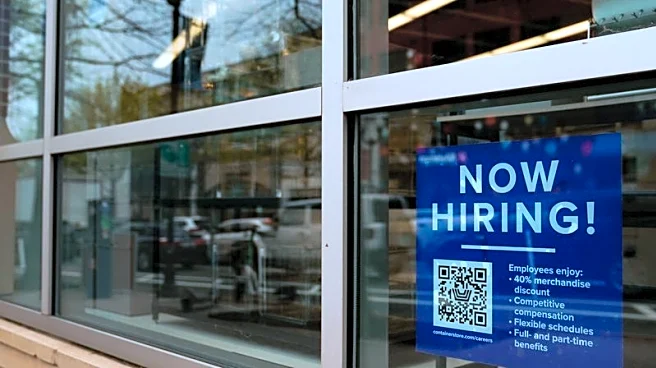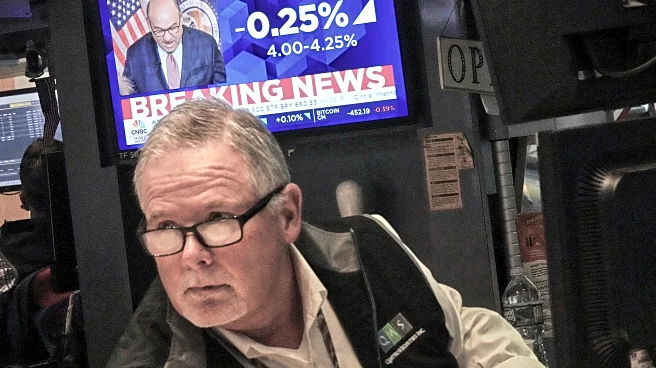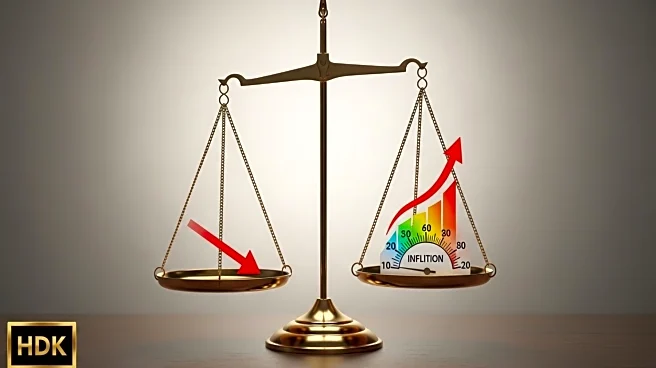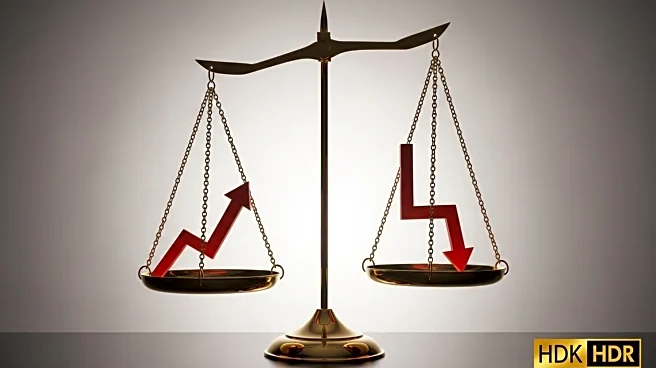What's Happening?
The number of Americans applying for unemployment benefits has decreased significantly, with filings dropping by 33,000 to 231,000 for the week ending September 13, according to the Labor Department. This decline follows a surge to a nearly four-year high of 264,000 the previous week. The Federal Reserve has responded to concerns about the labor market by cutting its key interest rate by a quarter-point, shifting its focus from inflation to employment. The Bureau of Labor Statistics recently revised job gain figures, revealing that U.S. employers added 911,000 fewer jobs than initially reported for the year ending in March 2025. This revision suggests that job growth was slowing even before President Trump implemented extensive tariffs on U.S. trading partners in April. The broader U.S. economic growth has also weakened, with a slowdown to a 1.3% annual rate in the first half of the year, down from 2.5% in 2024.
Why It's Important?
The decrease in jobless claims and the Federal Reserve's interest rate cut highlight the ongoing challenges in the U.S. labor market and economy. The revised job figures and the impact of tariffs underscore the uncertainty businesses face, potentially affecting hiring and expansion plans. The economic slowdown and labor market instability could have significant implications for U.S. industries, particularly those reliant on international trade. The Federal Reserve's actions aim to stimulate growth and hiring, but they also risk exacerbating inflation, which remains above the target rate. Stakeholders, including businesses and policymakers, must navigate these complexities as they assess the broader economic landscape.
What's Next?
The final revisions of job figures are expected in February 2026, which may provide further insights into the labor market's health. Businesses and policymakers will likely continue to monitor the effects of tariffs and economic policies on growth and employment. The Federal Reserve's future actions will depend on balancing inflation control with the need to support job creation. As the economic situation evolves, stakeholders may advocate for policy adjustments to address the challenges posed by trade disputes and economic uncertainty.












